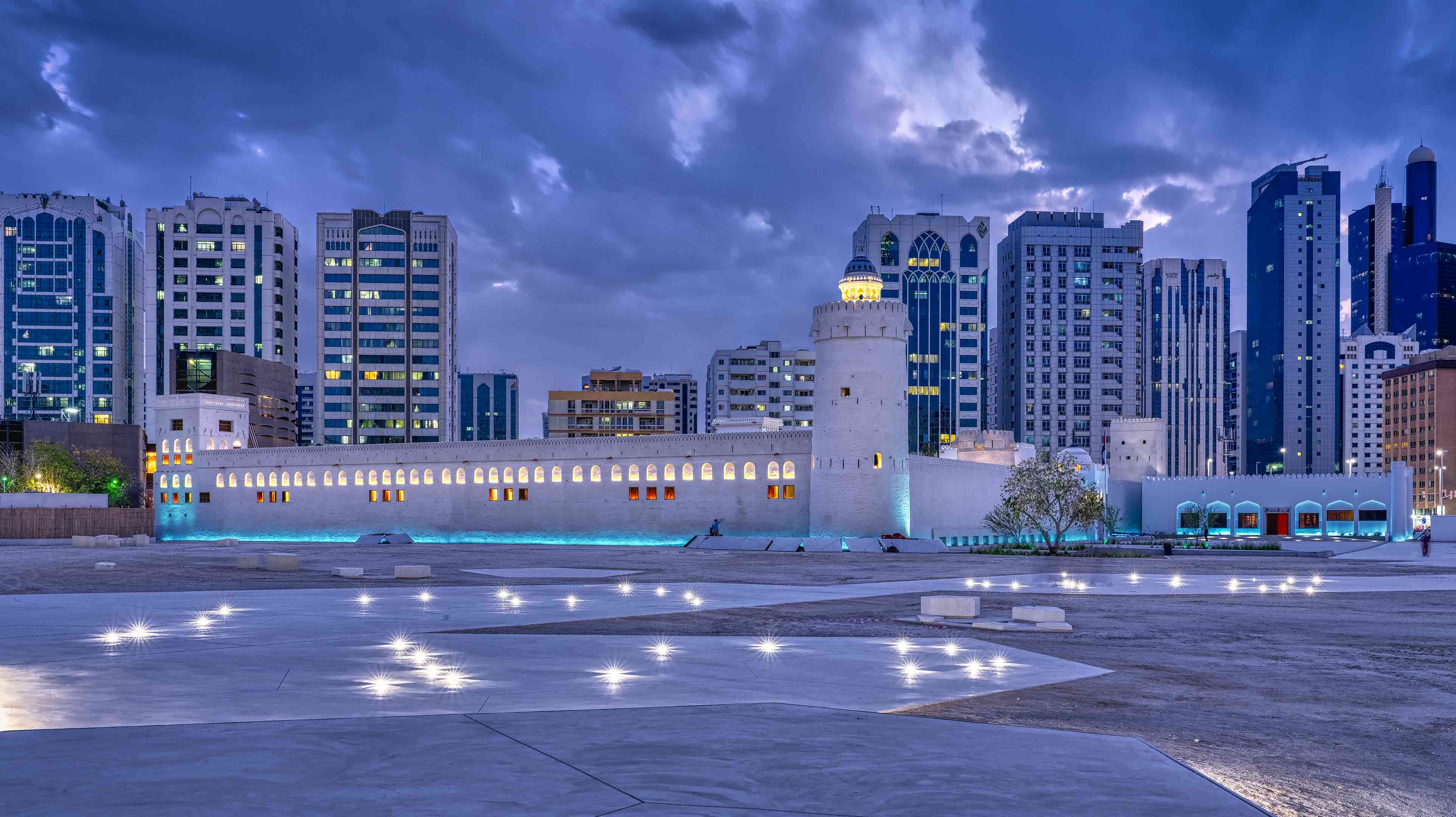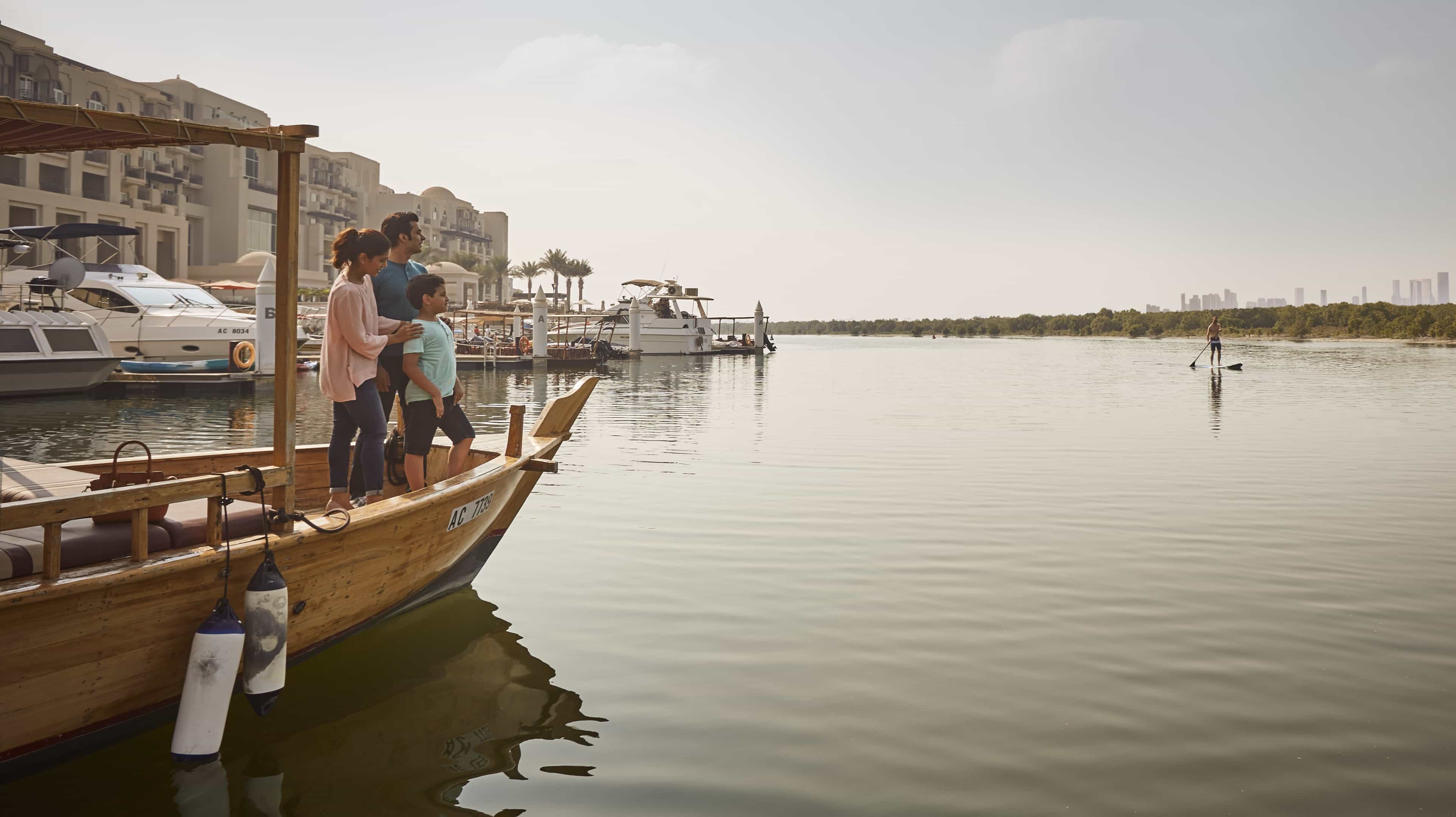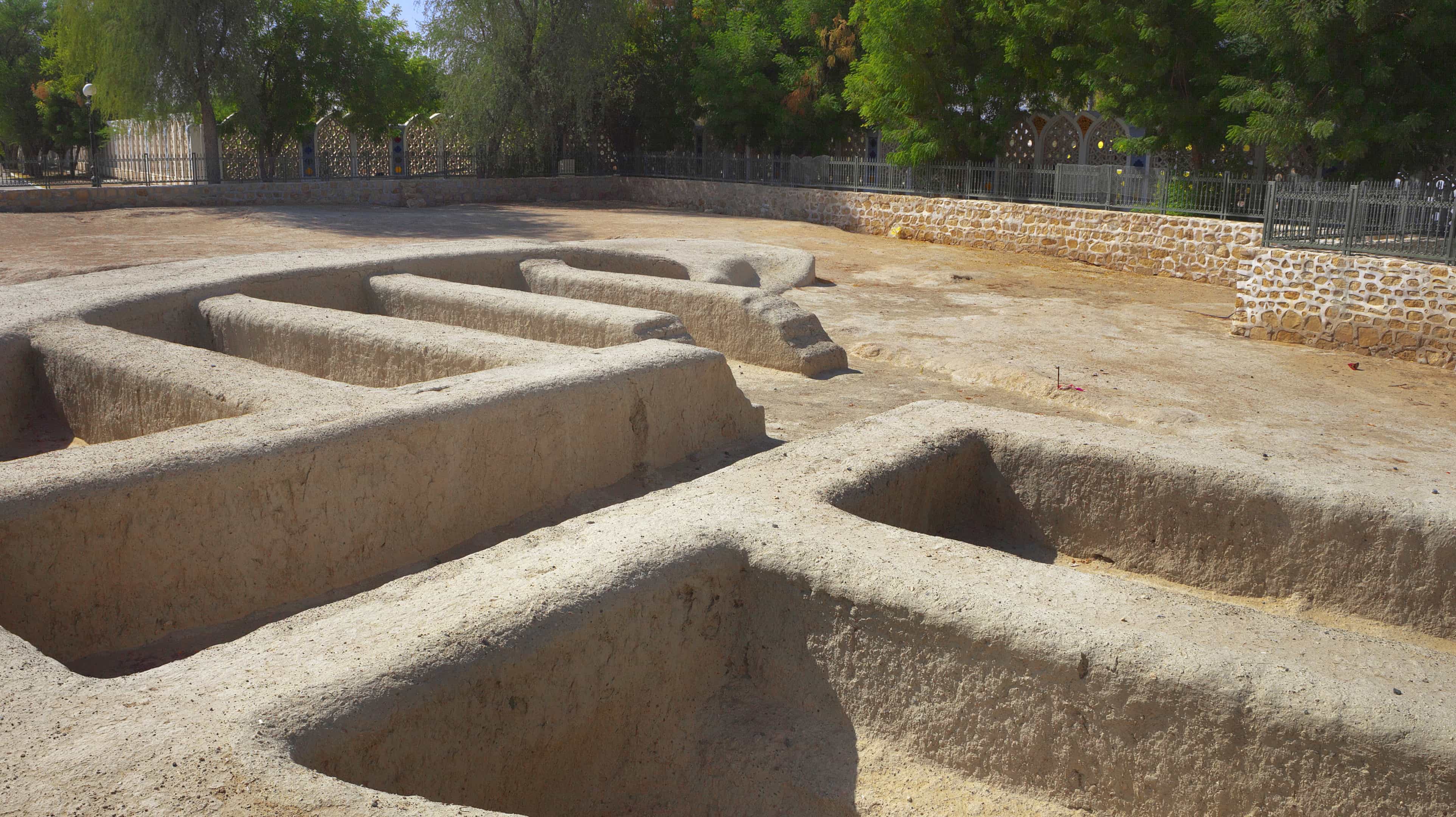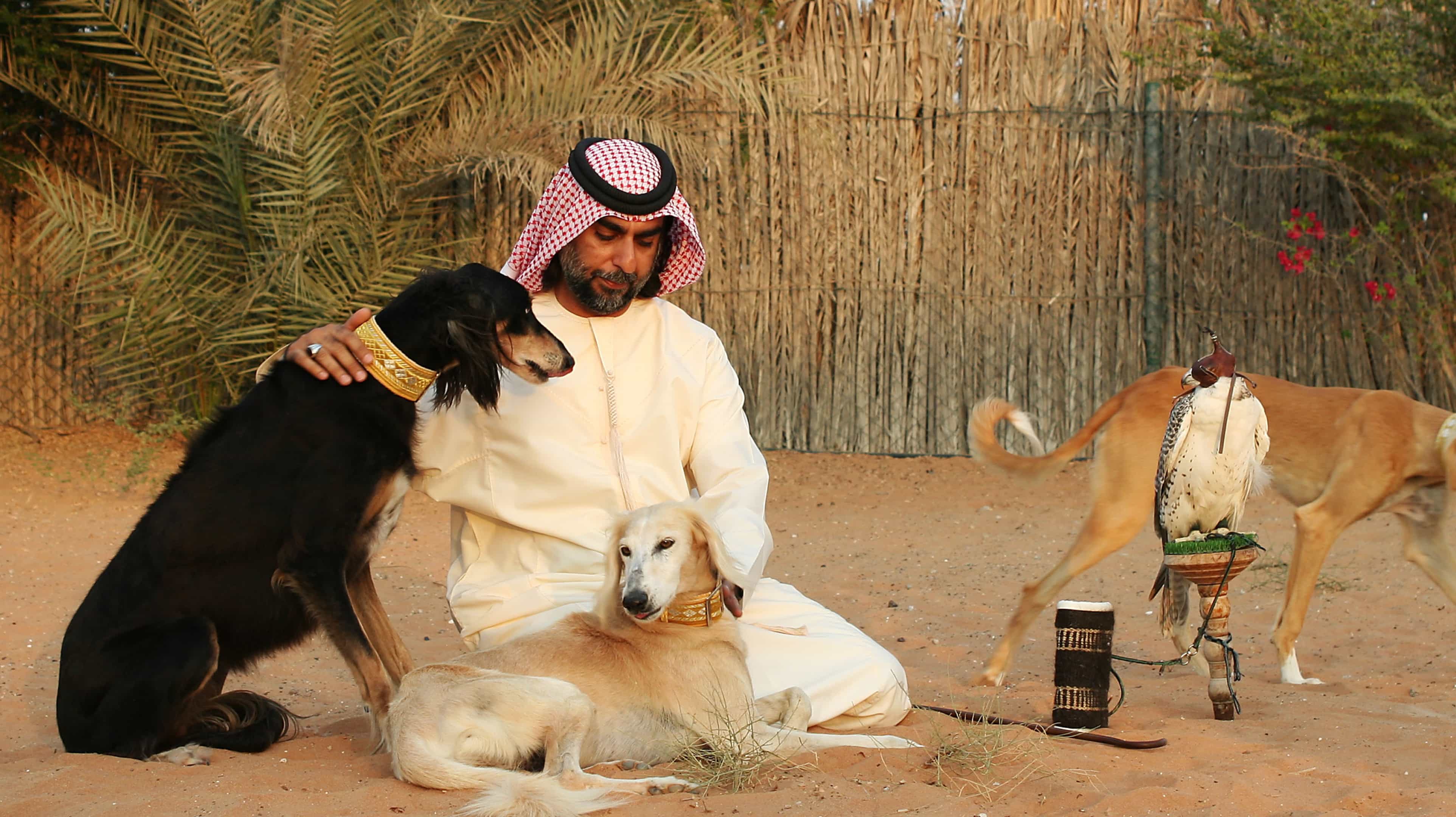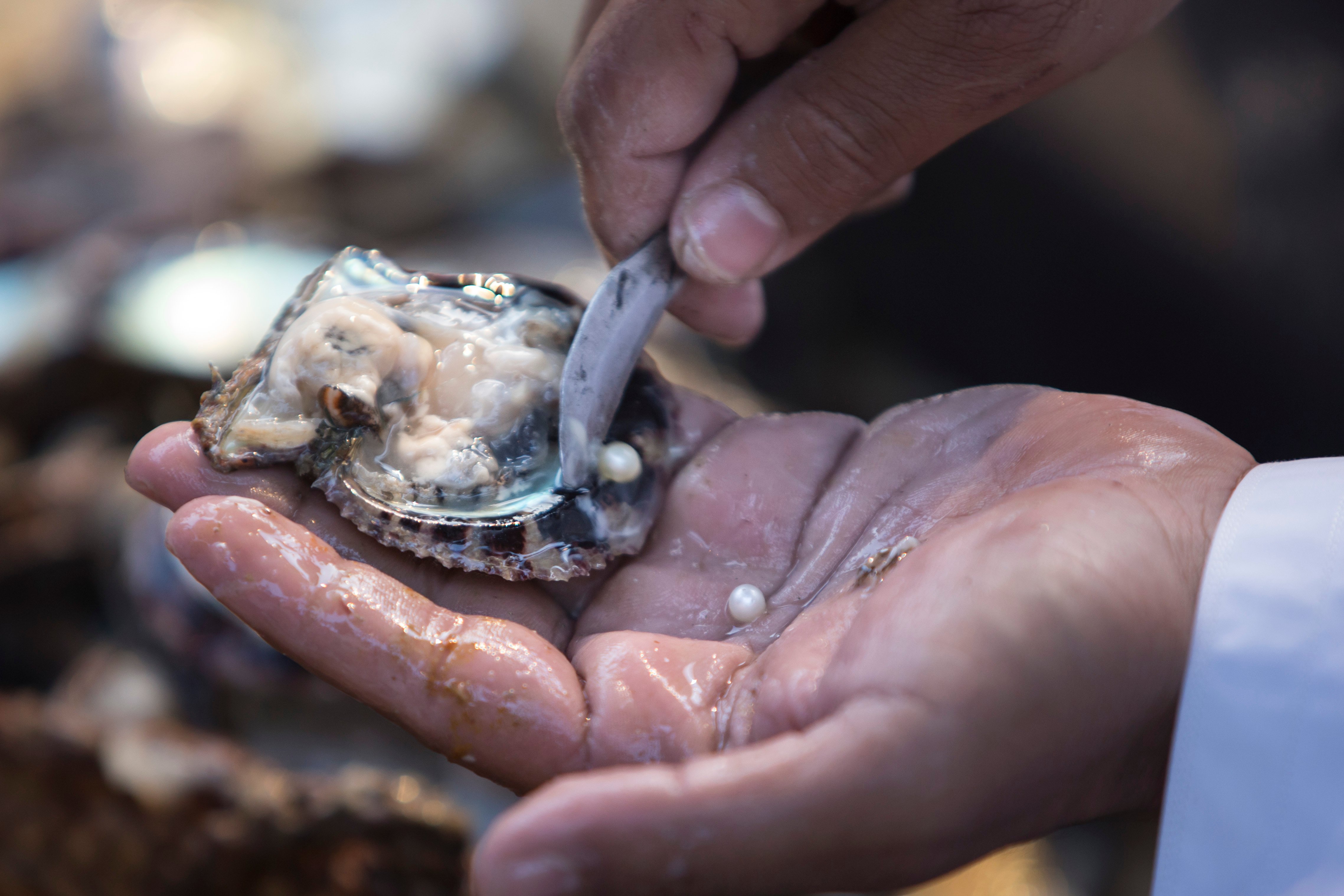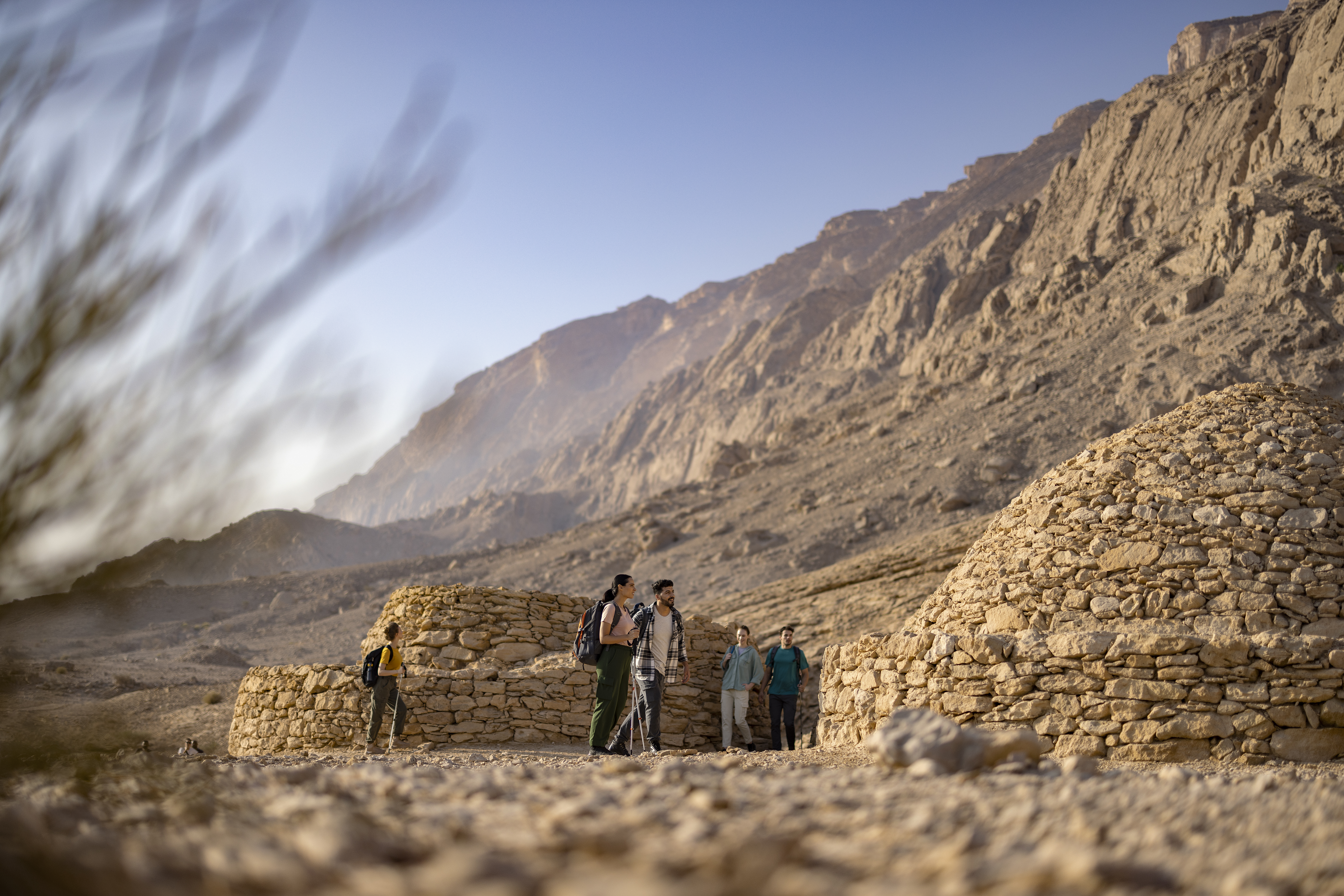See All
9 ways to discover Abu Dhabi's ancient history
Abu Dhabi's documented history dates to the Bronze Age, with evidence of historical civilisations that settled in or moved through the region. Forts, tombs and other artefacts have outlined the tracks of the Bedouin traders who traversed the incense trails of the famous Silk Road. The Bedouin are desert nomads who were accustomed to the harsh terrain and were suited to trading. For two millennia, camel caravans moved commodities across the Arabian desert to China, Europe, Asia and Africa.
In the 1700s, Bani Yas tribes settled in Abu Dhabi, meaning 'Land of the gazelle' in Arabic. Folklore says the UAE capital was founded when a deer led a wandering tribe to fresh water on an island with just 300 Barasti (palm frond) huts, some coral buildings and the Ruler's fort. This tribe included the current ruling Al Nahyan family. The settlers worked with their environment, becoming master seafarers and pearl divers.
Discover the wonders of this old city. Abu Dhabi's rich heritage and time-honoured traditions await!
1. Start in the city centre
The first place for history buffs to visit is Qasr Al Hosn, a national monument. The ancestral home of the Royal Al Nahyan family has served as the seat of government, a consultative council and a national archive. Standing proudly among the immaculate white walls of Qasr Al Hosn is the watchtower. Built in 1760 to protect the Bani Yas settlement, the oldest-standing building in Abu Dhabi is a museum showcasing the story of old Abu Dhabi.
2. Meet traditional artisans
Marvel at beautiful artwork and meet traditional artisans in the House of Artisans. Admire the art of Sadu - on the UNESCO List of Intangible Cultural Heritage in Need of Urgent Safeguarding - a traditional Bedouin form of weaving using wool from sheep, camels and goats to create striking geometrical designs to decorate tents (bait al-shaar) and camel-riding accessories (ataad). Other crafts include Khoos, a traditional weaving technique using date-palm leaves to make functional objects, such as baskets (jefeer), and the Bait Al Gahwa (coffee) ceremony. Sit in the cosy majlis as you watch the art of making the perfect cup of gahwa, and sip from dainty cups, called finjan.
3. Treasures from the sea
Hop on a boat to learn how the ancient people of Abu Dhabi relied on the sea for survival. Pearling and fishing played a major role in the emirate’s economic past. Pearl diving centred around the Ghous Al Kabir (The Big Dive) summer voyage, which lasted four months. Each voyage began with a seeing-off ceremony (Hiraat), and when the sailors returned, families onshore decorated their houses, sang welcome songs and shared a feast. Sail on a dhow, listen to age-old sea-faring songs and stories and learn about these pearl-diving techniques.
4. Wander through 4,000-year-old oases
Al Ain, Abu Dhabi's garden city located 90 minutes away, is of huge cultural and historical importance. Thanks to its underground springs and oases, it was inhabited by Bedouin tribes for hundreds of years. The farms and plantations around the oases are still active. Al Ain Oasis, the largest of seven oases, has been part of a UNESCO World Heritage Site since 2011. It's the perfect place to learn more about the region's inhabitants and the ancient irrigation system known as falaj.
5. Explore the forts
Other places of interest in Al Ain include museums and forts such as Al Jahili Fort - erected in 1891 to defend the city and home to an exhibition of the works of British adventurer Sir Wilfred Thesiger - and Qasr Al Muwaiji. The latter, a historic fort-palace, was the former diwan (council or seat of governance) and home of the royal family. Qasr Al Muwaiji is where His Highness Sheikh Khalifa bin Zayed Al Nahyan, President of the United Arab Emirates, was born and spent his formative years, learning from his father, UAE’s Founding Father Sheikh Zayed bin Sultan Al Nahyan.
6. The Bronze and Iron Ages
Located near Fossil Valley, Hili Oasis is home to fossils that date back to when the area was covered by the sea. The Hili Archaeological Park provides the earliest evidence of an agricultural village in the UAE, with Bronze Age and Iron Age villages, burial grounds, forts and agricultural infrastructure. The largest collection of tombs and buildings from the Umm an-Nar period (between 2500BCE and 2000BCE) are found here, with the centrepiece being the Hili Grand Tomb.
Another place to see impressive beehive-shaped Bronze Age tombs built between 3200 BCE and 2700 BCE is at Al Ain's Jebel Hafit Desert Park. Artefacts include pottery, beads and daggers, showing Bronze Age trade links with ancient Mesopotamia (modern-day Iraq), Iran, and the Indus Valley (modern-day Pakistan and India).
7. Discover cross-cultural history at Sir Bani Yas Island
The wildlife haven of Sir Bani Yas Island - approximately 2.5 hours and a ferry ride away - is ideal for history lovers. One of the earliest written accounts of the island was in 1590 by Venetian jeweller Gasparo Balbi, who mentioned an island surrounded by pearls. During the 7th and 8th centuries CE, it was also home to a church and monastery, but was only discovered in 1992. This ancient Christian site proves a history of religious tolerance in the region. Fascinating artefacts suggest the inhabitants of this settlement traded widely across the Arabian Gulf and Indian Ocean.
8. The world’s largest sand mass
Abu Dhabi's magical Rub' al Khali (Empty Quarter) - the world's largest uninterrupted sand mass - is just 1.5 hours from the city. Explorer and travel writer Sir Wilfred Thesiger, who crossed this expanse twice with Emirati and Omani companions in the 1940s, wrote: "This cruel land can cast a spell which no temperate clime can match". Given its geography, ancient Arabia was part of the Silk Road routes used by merchants travelling between China and Europe, carrying silk and other luxury goods across Asia, the Middle East and North Africa between 130 B.C. and 1453 A.D.
9. Meet the animals that made history
While the Bedouins' pioneering spirit was key to Abu Dhabi's development, the animals at their side played starring roles in the capital's story. In addition to much-valued camels, falcons and salukis helped the Bedouins survive. The indigenous Saluki − one of the oldest known breeds of domesticated dog − hunted together with falcons for the Arabian desert people for 5,000 years. Falcons helped spot prey in a resource-scarce land, as reflected in Bedouin poetry, songs and stories. In 2016, falconry was inscribed on the UNESCO Representative List of the Intangible Cultural Heritage of Humanity.
Be inspired
Frequently asked questions
What is the history of Abu Dhabi?
There is evidence that Abu Dhabi's history dates to the Bronze and Iron Ages. However, the emirate's story began in the late 14th century when the Bani Yas tribe built a small fishing village and established fishing, pearl diving and trade on the island. The discovery of oil propelled the city's rapid development into the thriving hub we know it today.
What are 5 interesting facts about Abu Dhabi?
There are many interesting facts about Abu Dhabi. But here are 5 interesting facts we bet you didn't know:
- Abu Dhabi means 'Land of the Gazelle'.
- Abu Dhabi was famous for its pearl trade.
- Abu Dhabi is home to the second tallest mountain in the UAE, Jebel Hafit Mountain.
- Abu Dhabi is home to the Empty Quarter, or Rub Al Khali, the world’s largest uninterrupted desert region.
- The Sheikh Zayed Grand Mosque in Abu Dhabi holds the world's largest hand-knotted carpet.
What makes Abu Dhabi famous?
The culturally rich and diverse capital of the UAE, Abu Dhabi is famous for its architecture, history and key attractions.
